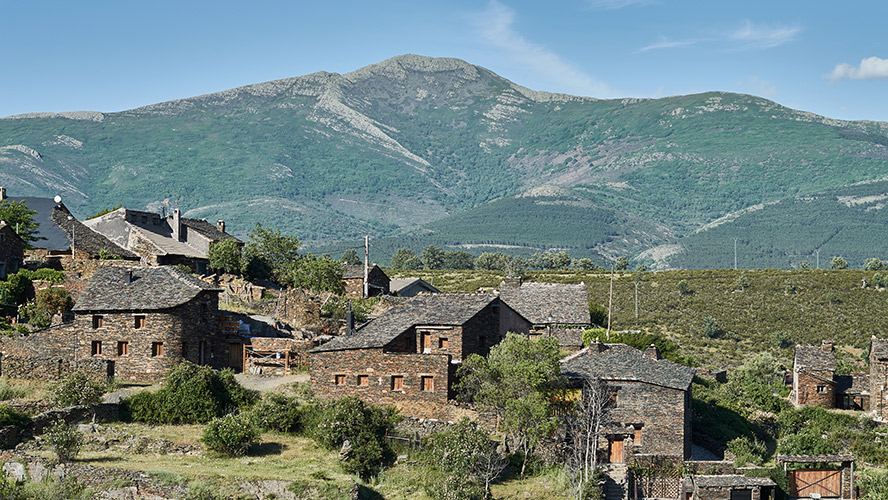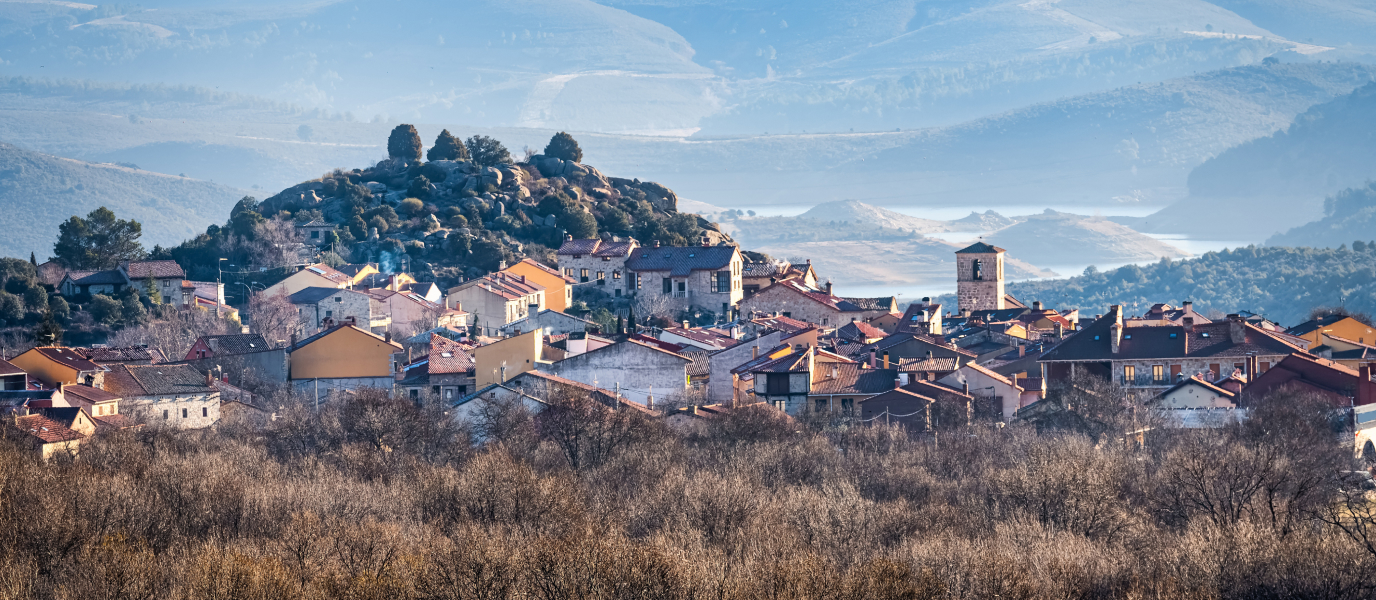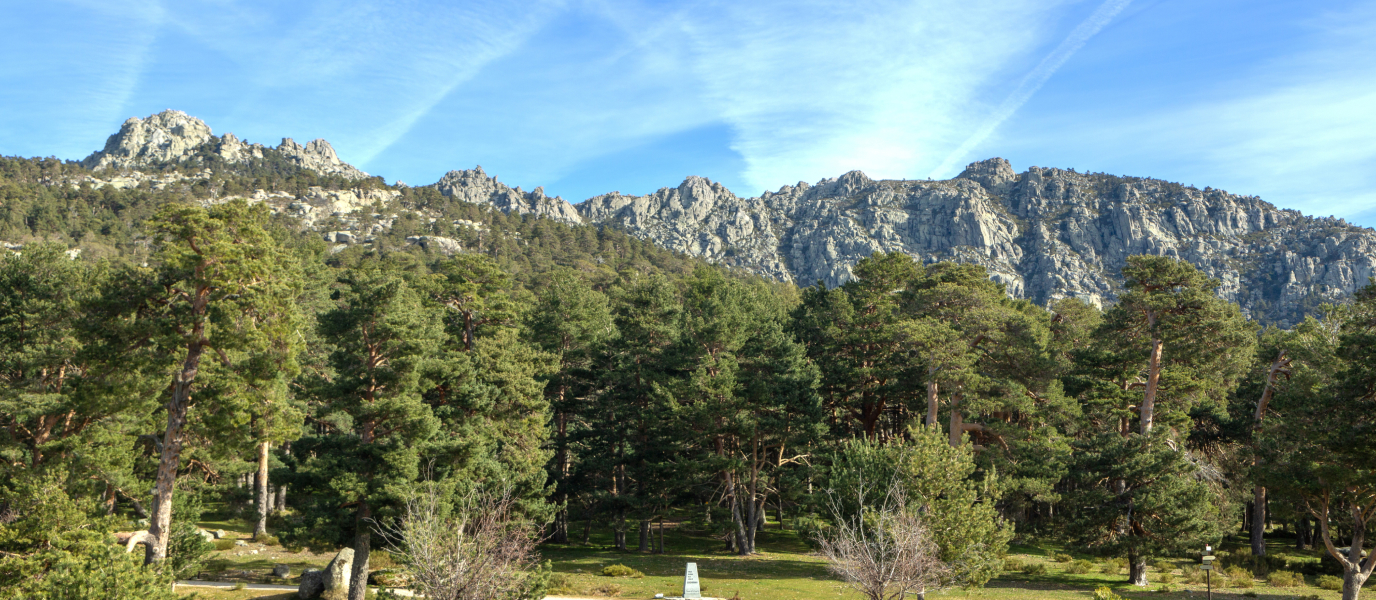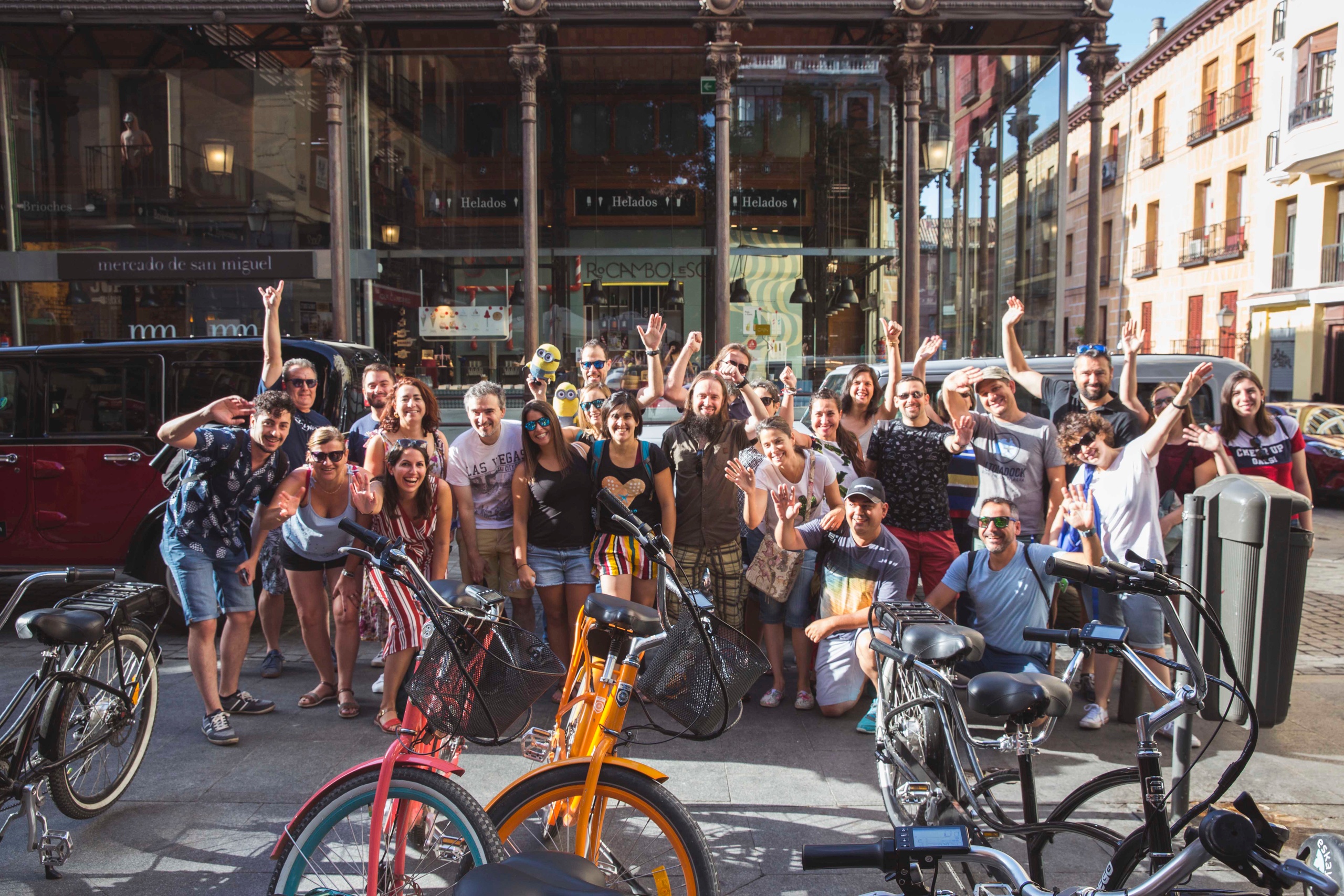The village of Valverde de los Arroyos is not strictly speaking in the Community of Madrid but very close to it in the neighbouring province of Guadalajara. In the streets and squares of the village you will find some of the most representative examples of black architecture. That is, traditional buildings constructed from dark-coloured stone and slate slabs.
Valverde de los Arroyos is, of all the villages that make up the Route of the Black Villages of Guadalajara, one of the most visited. And you can perfectly understand why when strolling through its stone-paved streets. In fact, it is included on the list of The Most Beautiful Villages of Spain, due to its authenticity and for having retained its layout over the centuries.
As attractive as the important architecture in Valverde de los Arroyos is the natural setting in which it is situated, on the southern slopes of the Sierra de Ayllón and under the imposing summit of Ocejón peak, which remains covered in snow for much of the year. All this is in addition to deciduous forests, which in autumn take on spectacular red and ochre tones.
Streets and old town
Valverde de los Arroyos is one of the highest villages in Spain, standing 1,280 above sea level. This partly explains the small number of inhabitants (less than 90) and the fact that the old town has so few buildings. In fact, it is possible to cover the whole village in just a few minutes.
Valverde de los Arroyos has only eight streets, as well as the section of the road to Tamajón which runs through it. Of all of them, Calle Nueva is the street that connects most of the historical part of the village. You will also find Calle Arroyo, the circular Calle de la Nogueras and Calle Erandón. All of them are flanked by old buildings with masonry façades made from slate stones and gable roofs.
But Valverde de los Arroyos does not only consist of old houses. Over recent years new houses have also been built, always in accordance with the urban development plan, which requires that all the façades in the village and the structure of their homes and other buildings must maintain the characteristic black village style.
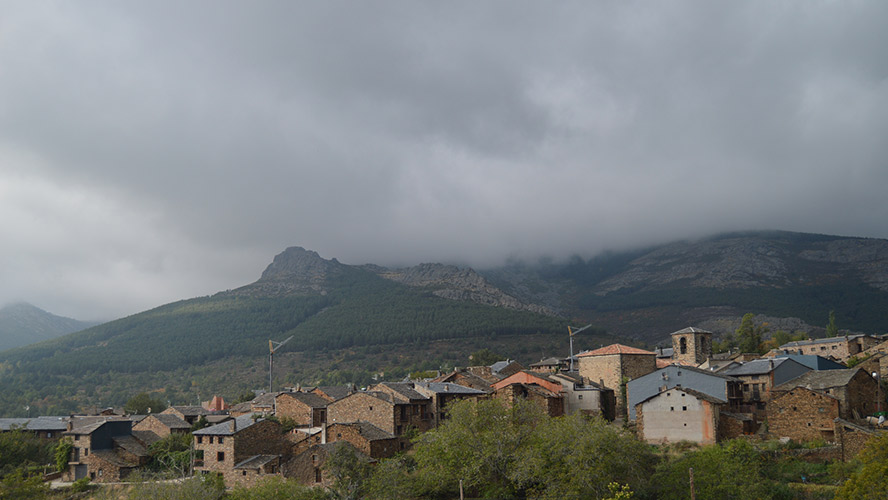
Ethnographic museum
The Ethnographic museum of Valverde de los Arroyos is housed in one of the village’s most traditional buildings. Inside it houses a large selection of old everyday objects, both for work and the home, collected over the years. But, above all, the exhibition spaces is a tribute to the textile industry, which was so rich and so important for the area until relatively recently, due to sheep’s wool. The most important piece in the area is a wooden loom, believed to be more than a century old.
The museum also houses a section dedicated to honey, a defining feature of La Alcarria, and other rooms dedicated to farming, slaughtering and black architecture. All of this is in addition to a large collection of photographs, a room for audiovisual projections and a library.
Plaza de Maria Cristina
One of the most notable parts of Valverde de los Arroyos is the main square, named after Maria Christina, in tribute to the queen mother of Alfonso XIII and regent until the coming age of the monarch. The square is home to Sant Ildefons parish church, which is a fine example of black architecture owing to its magnificent structure. Incidentally, it is the only building in the village whose roof is covered in tiles instead of slate slabs.
On the square there is also a round stone fountain, a symbol of the village, surrounded by several large houses. The contrast between the black stone that characterises these buildings and the vegetation that climbs up some of the façades is very attractive, and, from spring, this is also the case for the many flowers that residents use to decorate them.
For one reason or another, Plaza de Maria Cristina is a lovely spot and one of the most popular meeting points for the people of Valverde de los Arroyos.
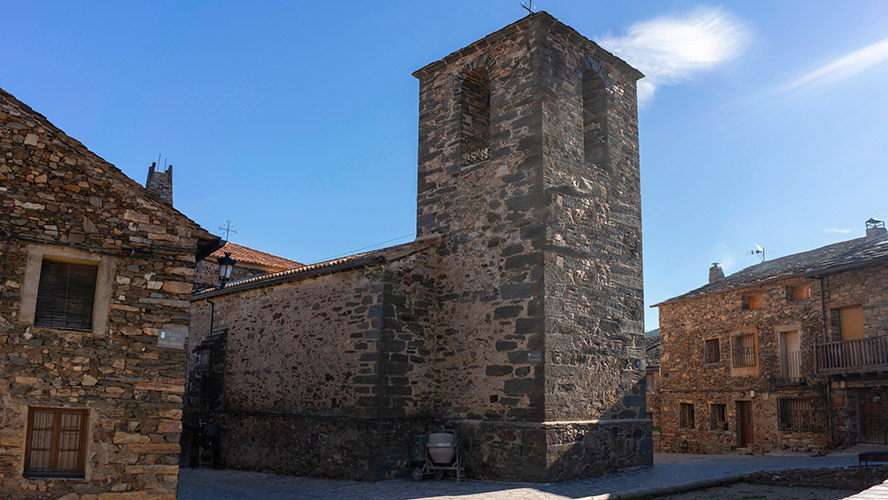
Trails and nature
The most visited natural area in Valverde de los Arroyos are the Chorreras de Despeñalagua. That is, the series of waterfalls caused by the drops in height of Chorrera stream. They are located around 3 kilometres from the village, along a path that is lovely, especially in summer, as it runs parallel to several watercourses.
But, when it comes to the nature surrounding Valverde de los Arroyos, a particular must is Pico Ocejón, which is part of the Sierra de Ayllón, on the outer limits of the Sierra Norte de Guadalajara Natural Park. From the village, in the direction of the summit, there is a truly spectacular hiking route. In fact, once you get to the top of the mountain, on clear days you can enjoy some of the best views of the Central System.
The route has a moderate level of difficulty, mainly because of the difference in altitude (just over 1,000 metres across 5.7 kilometres). You can complete it there and back in around six hours.
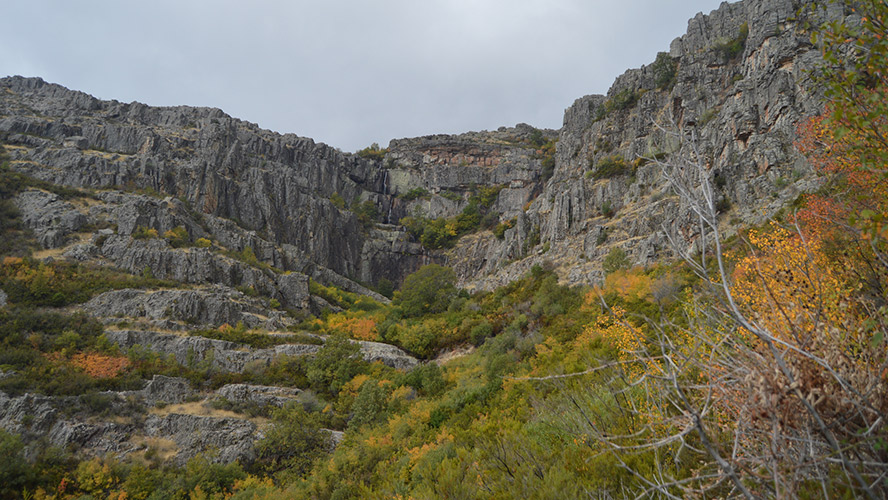
Where to eat in Valverde de los Arroyos
You can eat very well without having to leave Valverde de los Arroyos. In the centre of the village itself there are highly-recommended restaurants such as:
Los Cantos (Arroyo, 2)
those who come here do not only come for the local, authentic cuisine they serve but also for the pleasant sensation of dining in a large black-architecture building. The restaurant also has a very peaceful feel and very good service.
Mesón Despeñalagua (Enmedio, 10)
stews and grilled meats are the stars of the menu served in this unpretentious restaurant with simple, honest, tasty and convincing options. Their speciality is suckling lamb, which you need to order in advance.
La Tarihuela (Camino del Lavadero)
ituated next to the Ethnographic Museum, the dishes served at this restaurant are perfect for sharing between two or more people. Burgos blood sausage, partridge or deer paté, charcuterie platters, beef tenderloin, white beans with meat and creamy cheesecake are just some of the items on the menu.
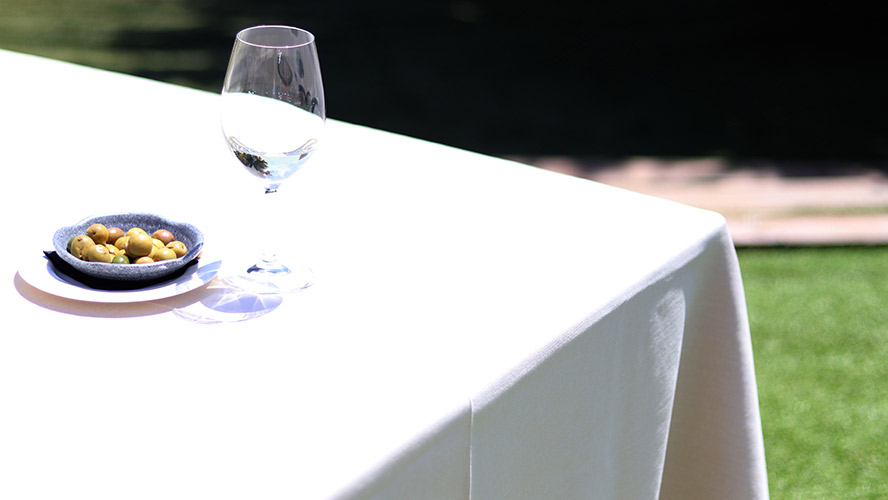
What to see in the surrounding area
Above all, the most interesting thing to see in the area is Pico Ocejón (2,049 metres), the eternal guardian of life in Valverde de los Arroyos and the whole region. Each season of the year has its charm on this iconic mountain, which is covered by vegetation on part of the slope. As we have already mentioned, there are several hiking trails that can be done in the area.
On the other side of the mountain, just over 12 kilometres away, along a winding, beautiful road, is Campillo de Ranas. The town is also part of the Route of the Black Villages of Guadalajara and a popular tourist spot. In fact, in recent decades many second homes and lodgings have been built, always in accordance with the area’s traditional architecture. Like Valverde de los Arroyos, the church tower stands out for its height and beauty.
And, close by, just 3.5 kilometres from Campillo and around 11 kilometres from Valverde, is Majaelrayo. Surrounded by several mountain peaks, it is perhaps the most authentic village in the area, many of whose houses have retained their traditional structure, adapted to new uses and customs. The village became very famous years ago because it was inhabited by a shepherd that an agency turned into the star of a successful advertising campaign for an all-terrain vehicle.
Where to stay to visit Madrid province
The Barceló group has five hotels in Madrid and the surrounding community that are a great place to stay to visit the province and other nearby places, such as Valverde de los Arroyos.
The Hotel Barceló Torre de Madrid is one of the hotel group’s leading hotels due to its commitment to design, with its striking interior, and due to its comfort, features and luxuries and also because it is housed in one of the most iconic buildings in the city, on Plaza de España.
In total, it offers 285 rooms, equipped with all the technology and features you would expect from a five-star establishment. The hotel’s dining options are also noteworthy, with the restaurant Somos, from where you can enjoy magnificent panoramic views of the Gran Vía, and the lobby-bar Garra. No less recommendable is the Wellness area, which has an indoor heated swimming pool and a fully-equipped gym.
The feeling of luxury and exclusivity is felt even more so at the Hotel Barceló Emperatriz, in the Salamanca district of Madrid, which has the feel of a nineteenth-century palace, but with all the mod cons and amenities of twenty-first-century hotels. In total, it boasts 146 rooms based on the B-Room concept, the hotel group’s highest quality standard. Every day the restaurant Mutis offers its Healthy Gourmet menu for a truly luxurious meal without losing sight of the basics of good nutrition.
In the northern part of the city there are also two very interesting hotels. On the one hand, the innovative Hotel Barceló Imagine, which has 156 rooms, also with B-Room quality, and the most diverse musical styles as the décor’s unifying theme. The hotel’s commitment to healthy eating and body care is also noteworthy. In fact, one of the most striking features of the accommodation is the gym, swimming pool and sauna area.
And, next to one of the main thoroughfares in Madrid is the Hotel Occidental Castellana Norte, situated in the city’s administrative and financial area. The hotel has 144 very modern, bright rooms. These include the family rooms, which are perfect for families travelling with children. At the restaurant Neptuno you can enjoy the most succulent Mediterranean cuisine.
Finally, in the south of the province is the Hotel Occidental Aranjuez, which has 168 rooms and a very modern, practical design. In addition to its three gastronomic spaces, which have something to offer all tastes and diners, is U-Spa, which, in a 1,200-square-metre space, houses a wellness centre that is considered the best equipped in the Community of Madrid.





























































